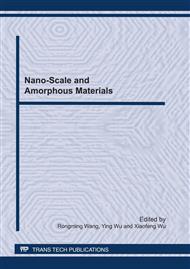p.314
p.321
p.326
p.334
p.339
p.344
p.349
p.353
p.358
Thermophysical Performances of Al2O3-Water Nanofluids and Its Heat Transfer Enhancement in Heat Pipe
Abstract:
Al2O3-water nanofluids with volume concentration of 0.1%~0.5% were prepared by a two-step method, the thermophysical parameters such as thermal conductivity, viscosity and surface tension were measured, The results showed that the thermal conductivity of Al2O3-water nanofluids increased with increasing temperature and volume concentration, while the viscosity decreased with increasing temperature but increased with increasing volume concentration, in contrast to the thermal conductivity, the surface tension significantly decreased with increasing temperature and volume concentration. Furthermore, Al2O3-water nanofluids with 0.5% volume concentration were added into heat pipe. The experimental measurements showed that the Al2O3-water nanofluids have improved the heat transfer performance of heat pipe and the heat transfer coefficient of the heat pipe with Al2O3-water nanofluids enhanced by 85.7% when compared with the heat pipe with deionized water.
Info:
Periodical:
Pages:
339-343
Citation:
Online since:
June 2011
Authors:
Price:
Сopyright:
© 2011 Trans Tech Publications Ltd. All Rights Reserved
Share:
Citation:


